June 10: The Asclepieum
It's just after 3 pm when we get to the Asclepieum, another part of the Pergamum historical area. It's in the valley below the Acropolis site, and noticeably cooler (although still hot).
The Sanctuary of Asclepius (the Asclepieum) was a place of healing. Asclepius is the god of healing in ancient Greek religion. Good online discussions of the Asclepieum are on Wikipedia, Turkish Odyssey, and Turkey Travel Planner.
Signs at the site tell us the history as we walk along, and I am going to copy some of their content here. (I had to make a few corrections, though, the English versions on the signs were usually fraught with [sometimes funny] grammatical errors.)
From the signs:
"According to myth the sanctuary was founded by Arkhias. He had injured his food [sic] while hunting in Greece and was healed in Epidauros, the most famous Asclepieion in Greece. Out of gratitude to the god he established the cult of Asclepios in his hometown of Pergamum."
"Finds from the excavations date back to prehistoric times and the cult may predate the 4th century BC. The sanctuary that we see today was mainly built under the rule of the Roman emperor Hadrian (117-138 AD). During the Roman era Pergamum gained a high reputation due to the healing methods and famous doctors like Galen (131-210 AD) at the Asclepieium."
At one time, the Asclepieum was connected to the city by a 1 kilometer long, partly covered Holy Street (Via Tecta). The final part of the way was a columned road during the reign of Roman Emperor Hadrian. This is what remains today:
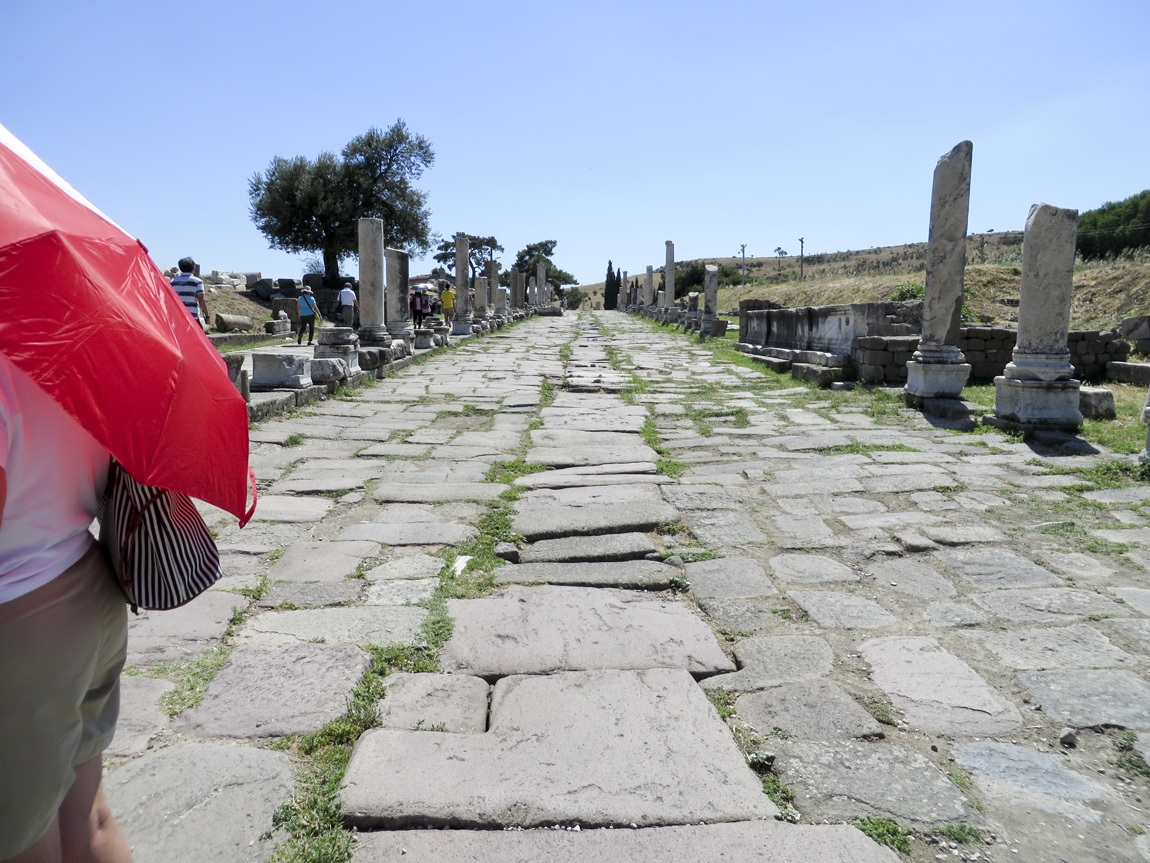
New patients were met by the priests at a gateway and an initial judgement of their medical condition made. Those who were obviously dying were not let in, nor were pregnant women. Accepted patients were led into the sacred area: a temple, fountains, pools of water, and sleeping rooms. The water came from a spring, and was believed to have sacred healing powers. The spring water still runs today:
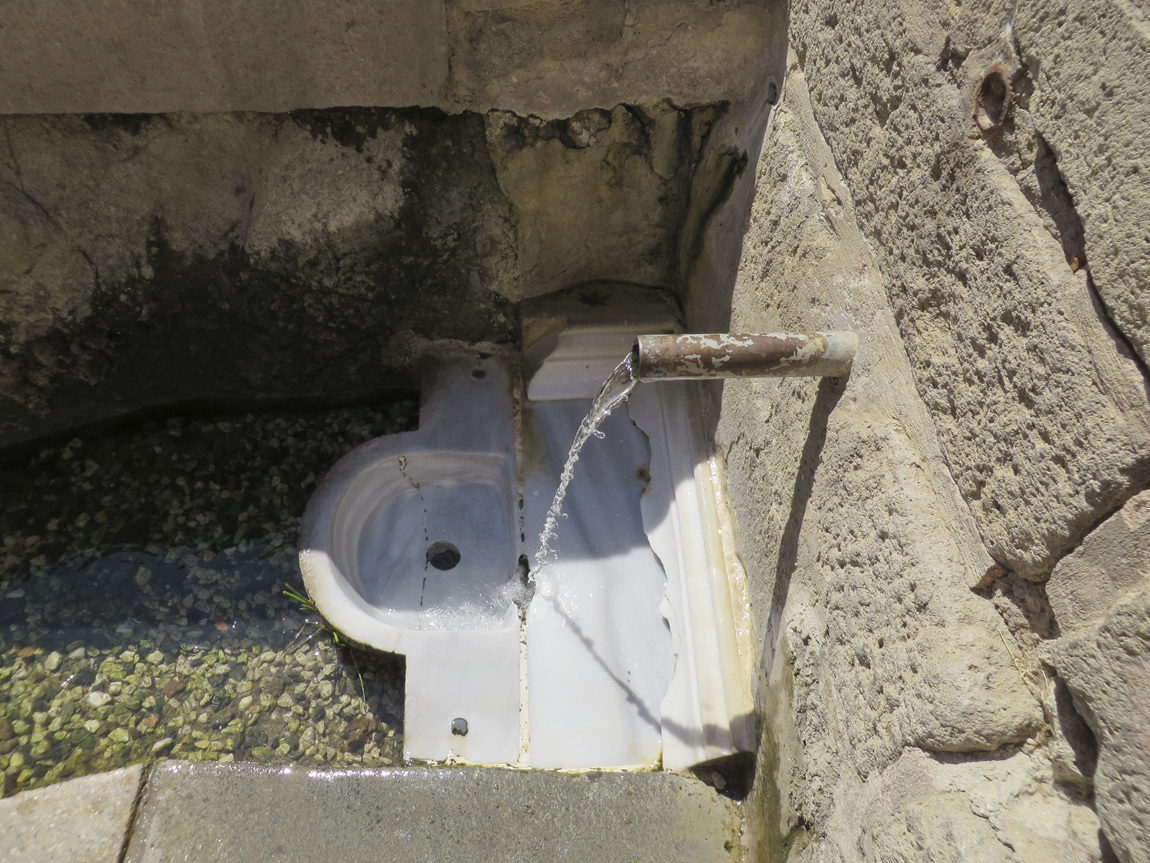
The priests would ask patients about their dreams, as they believed that in the patients' dreams Asclepius would appear in a vision to tell them how to cure their illness.
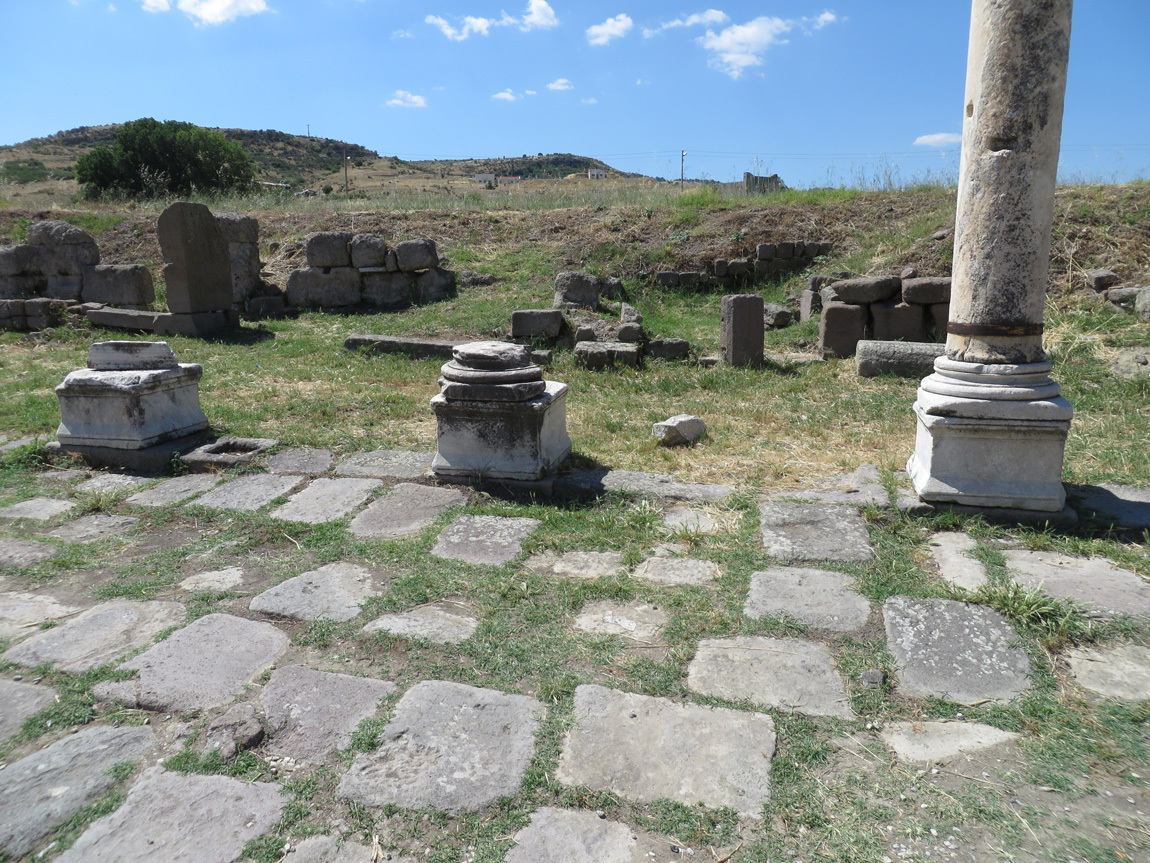
Shops lined the columned road. These shops might have sold commodities that would help patients in their healing.
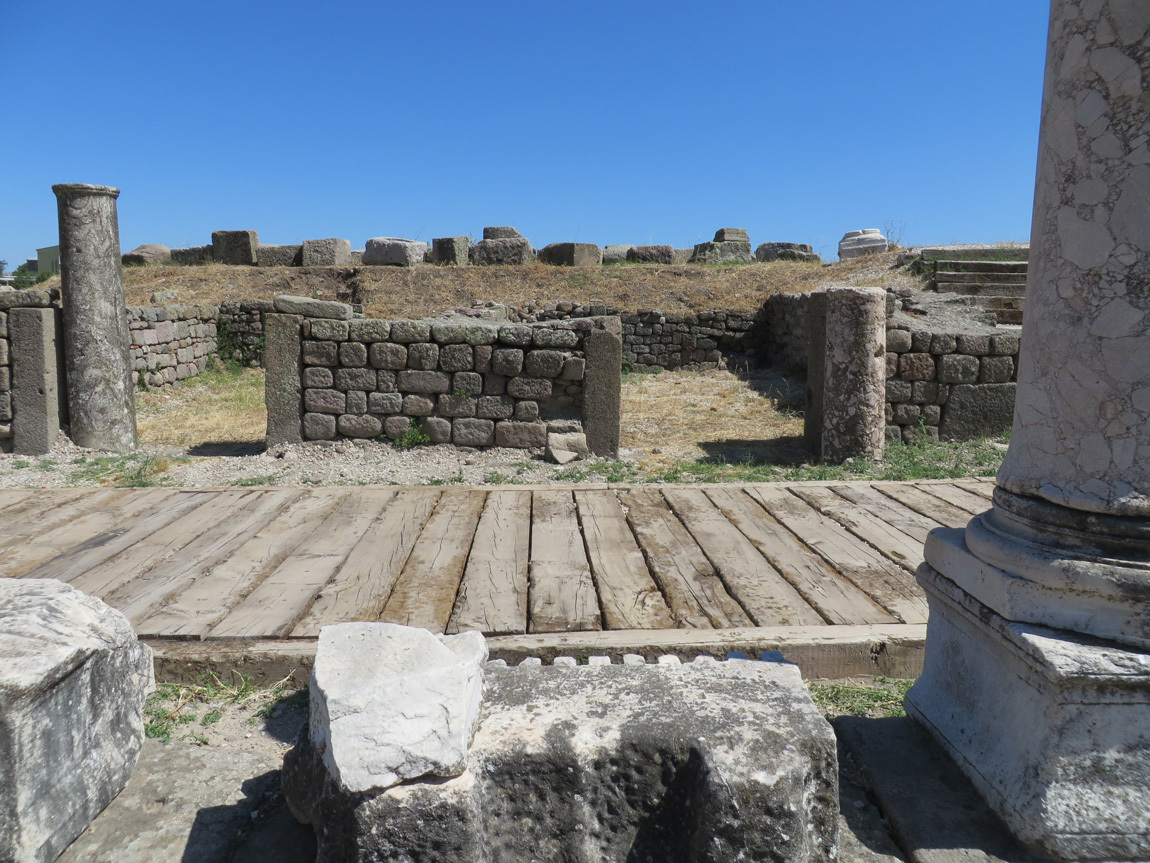
Ruins of a temple to Asclepius:
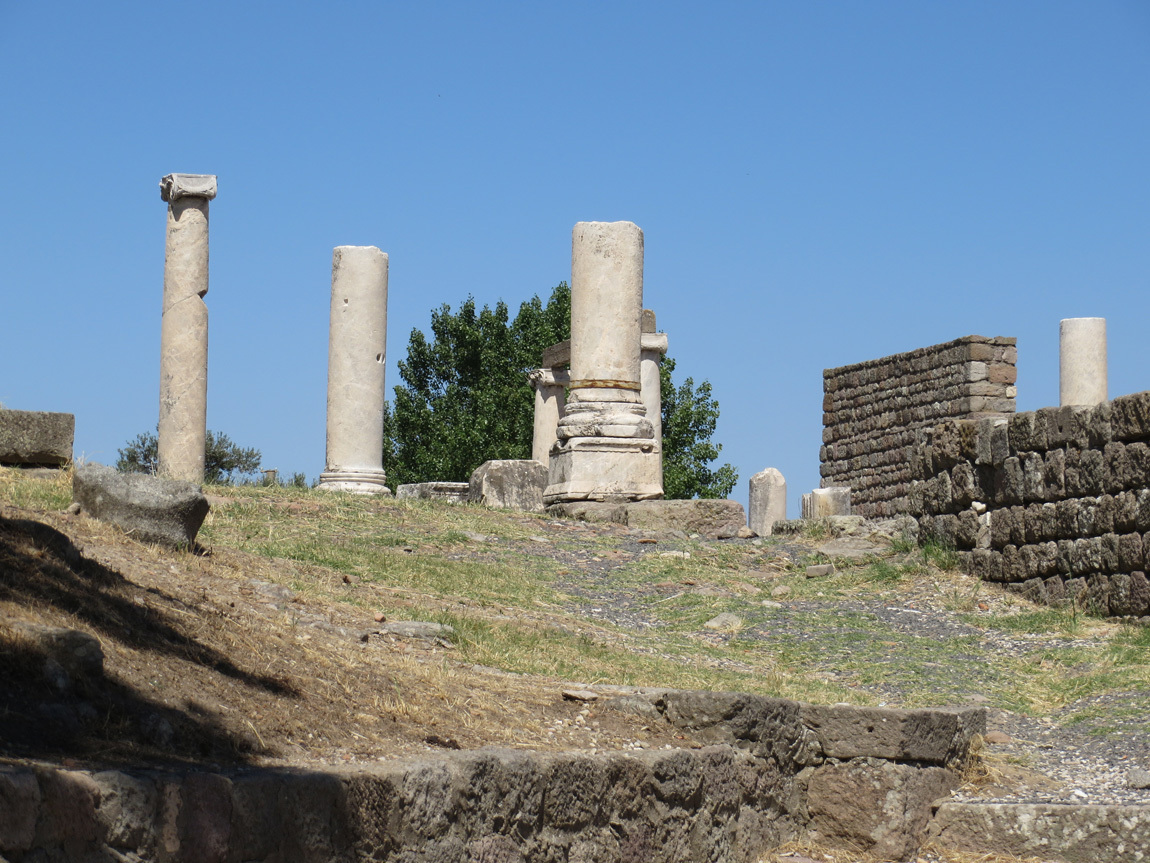
I was intrigued by the waterways that ran just underneath the ancient road. Stones were hollowed out to form a passageway for the water. Here is one of the old stones, set on its side:
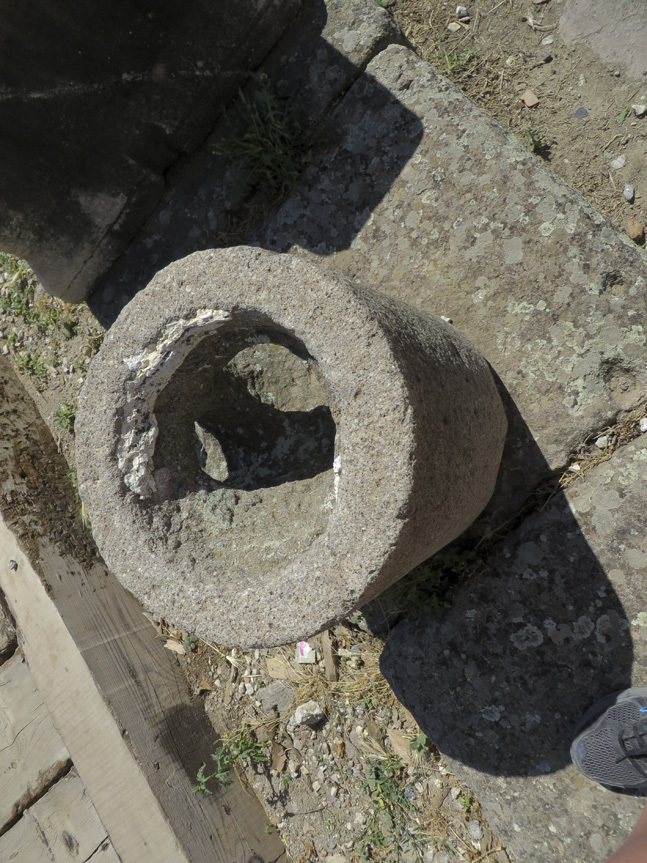
Sections of columns were stacked and reinforced with lead poured through holes drilled in each section. The lead then served as a rod to keep the column sections stacked. Over the years the lead was robbed from the column sections, leaving empty holes in the stones.
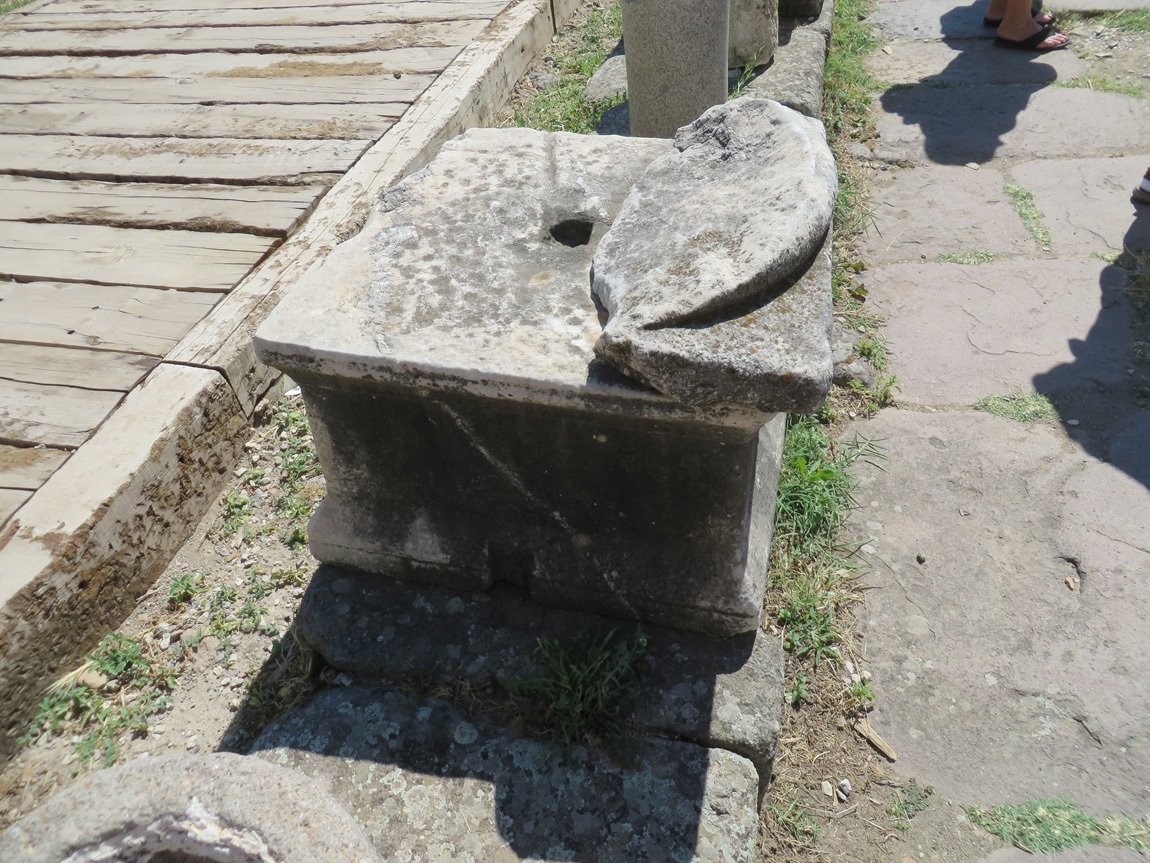
This marble column fragment bears Asclepion's symbol: two snakes facing each other across a wheel. As snakes shed their skins they are "reborn," and likewise the patients at the Asclepion were to shed their illnesses and regain health.
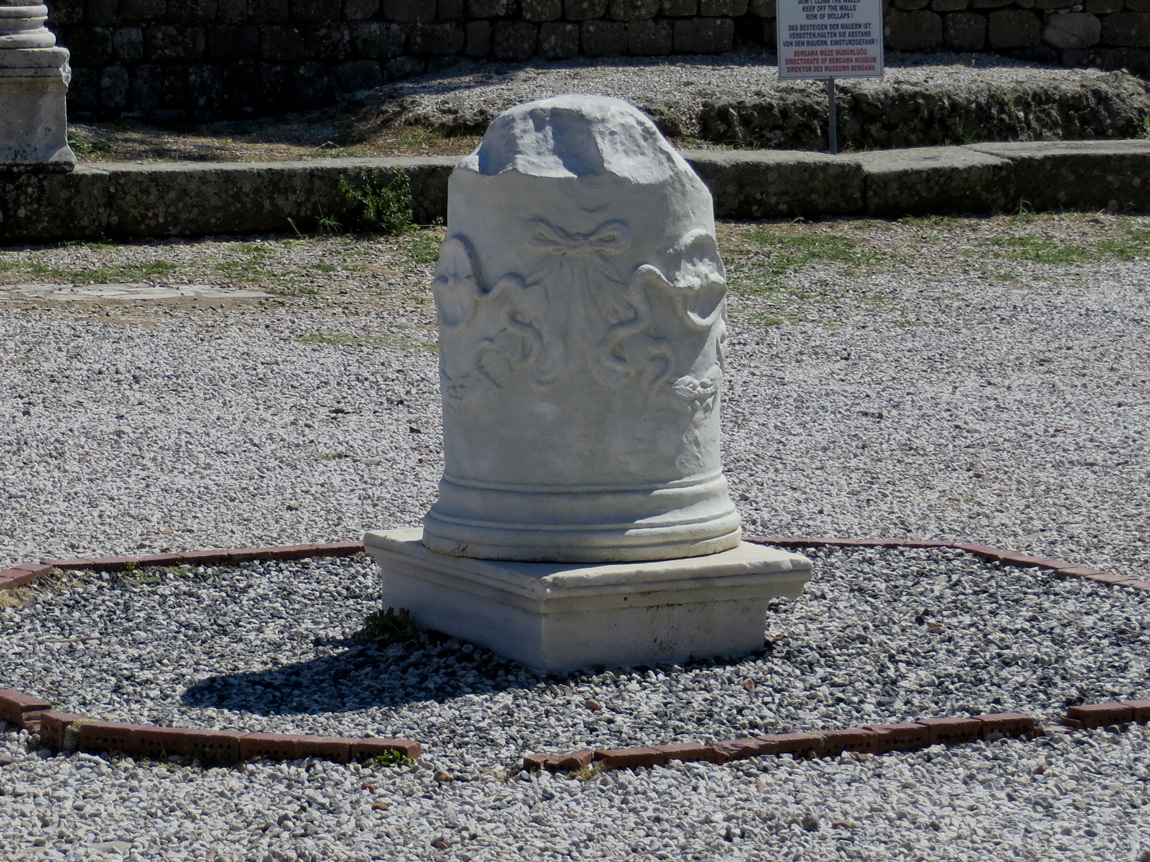
You can barely see an old theater in the back in this photo. It sat 3500 people and had sacred pools in front.
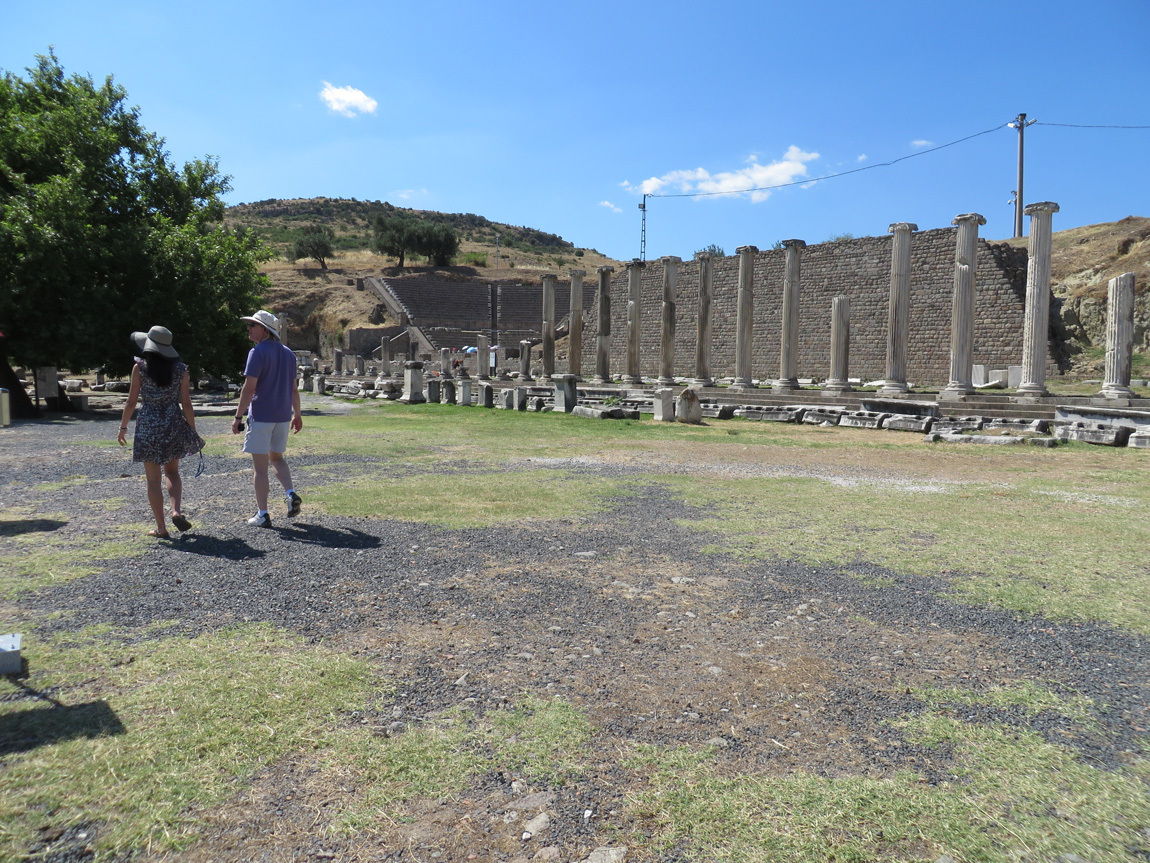
I really liked this next part of the Asclepieum. We came up to a half-buried tunnel:
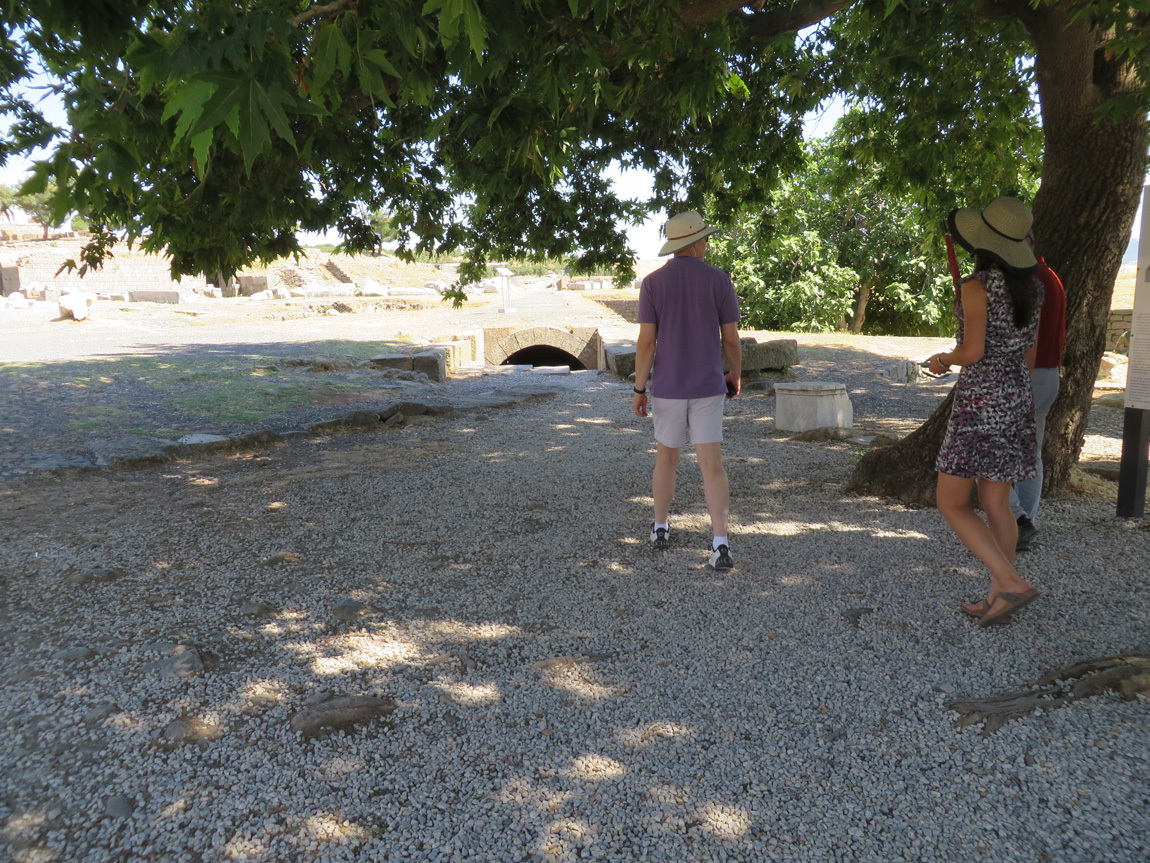
At one time this tunnel was completely buried, and that fact kept it intact. We walked through the arched, long room. This was the sleeping area of the old Asclepieum. It was cool and dim, such a nice change from the glaring sunlight outside. As we walked through it, we saw places where the sacred springs fed into it, and we saw remnants of marble that once lined the bottom. It was neat!
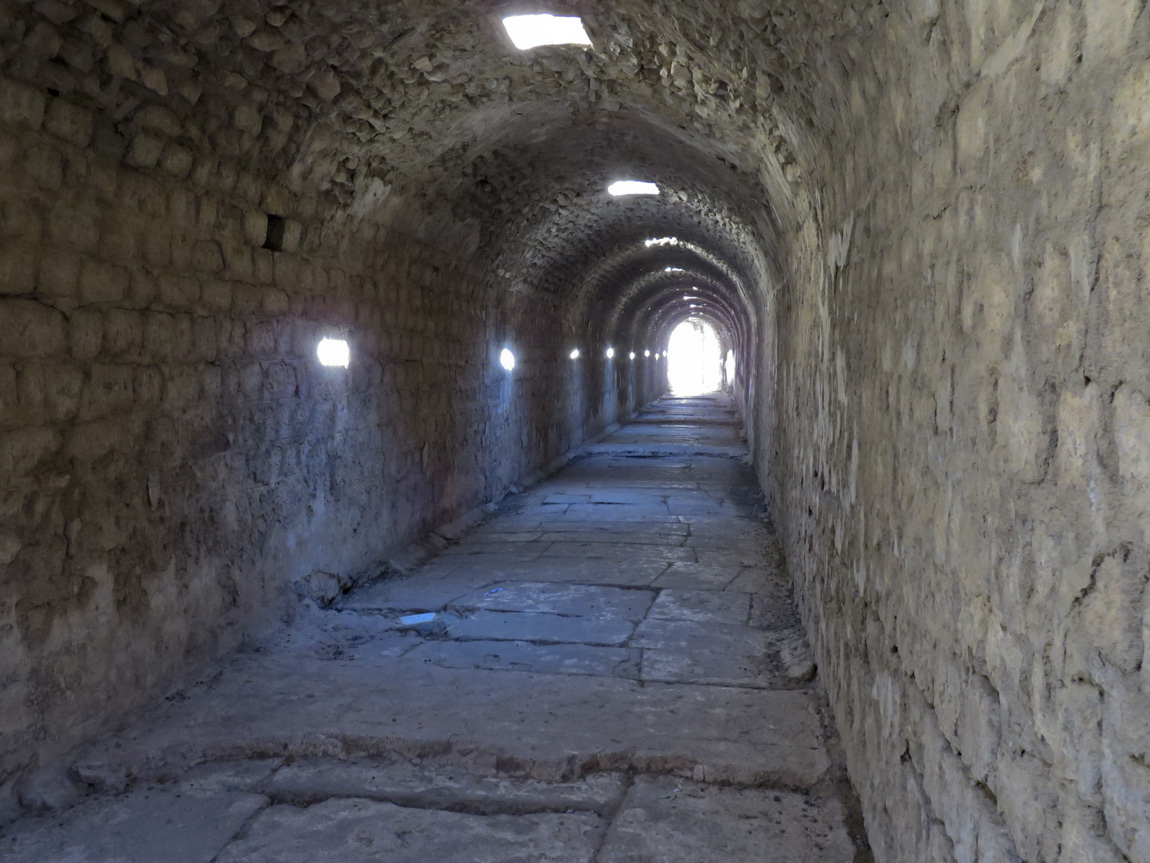
This view is taken from the other end:
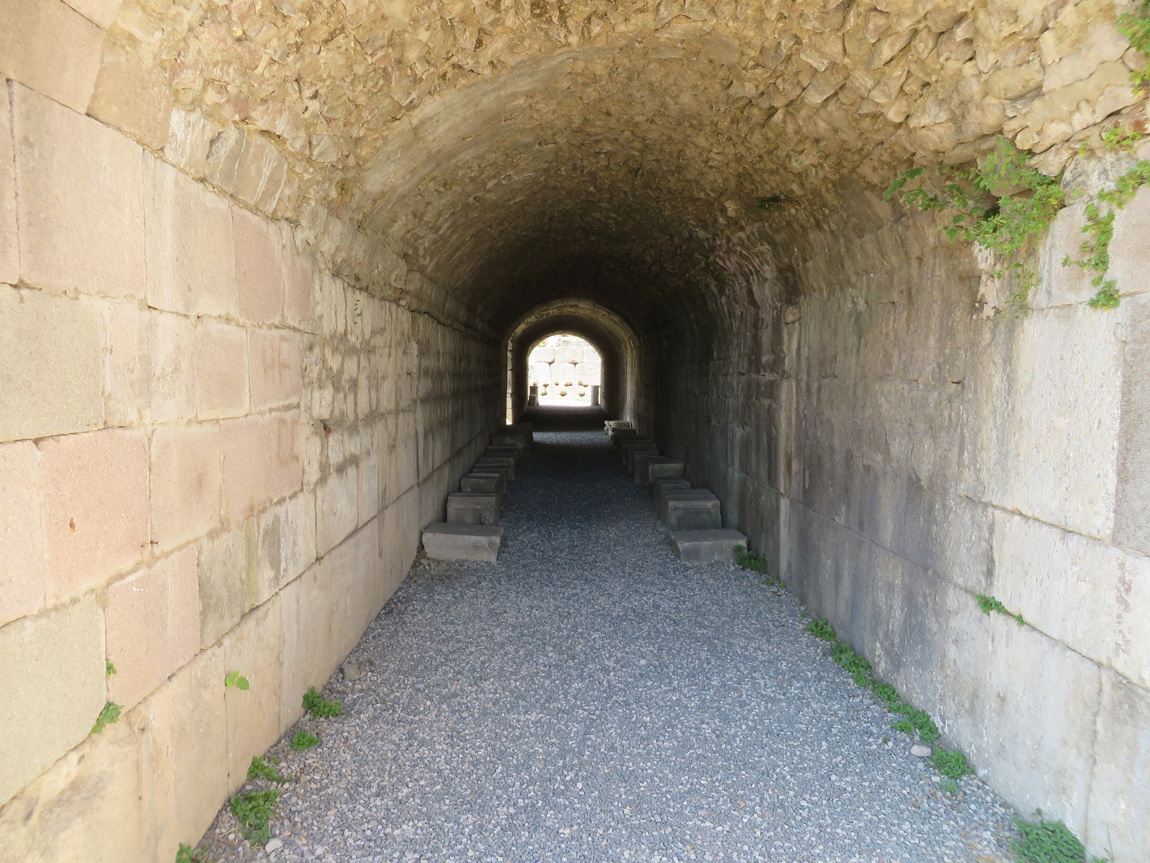
We left the Asclepieum around 4 pm and drove south to Izmir, about a 2 hour drive away. Here are some photos as we neared our hotel.
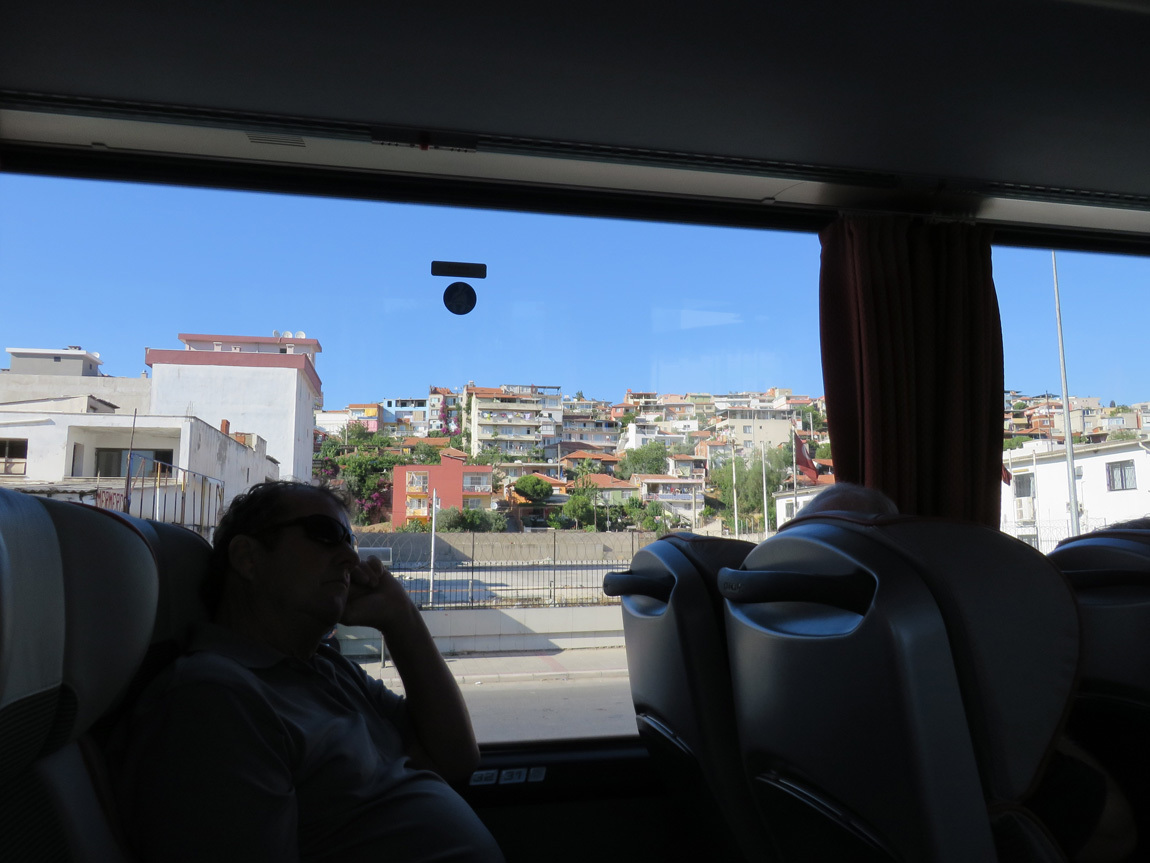
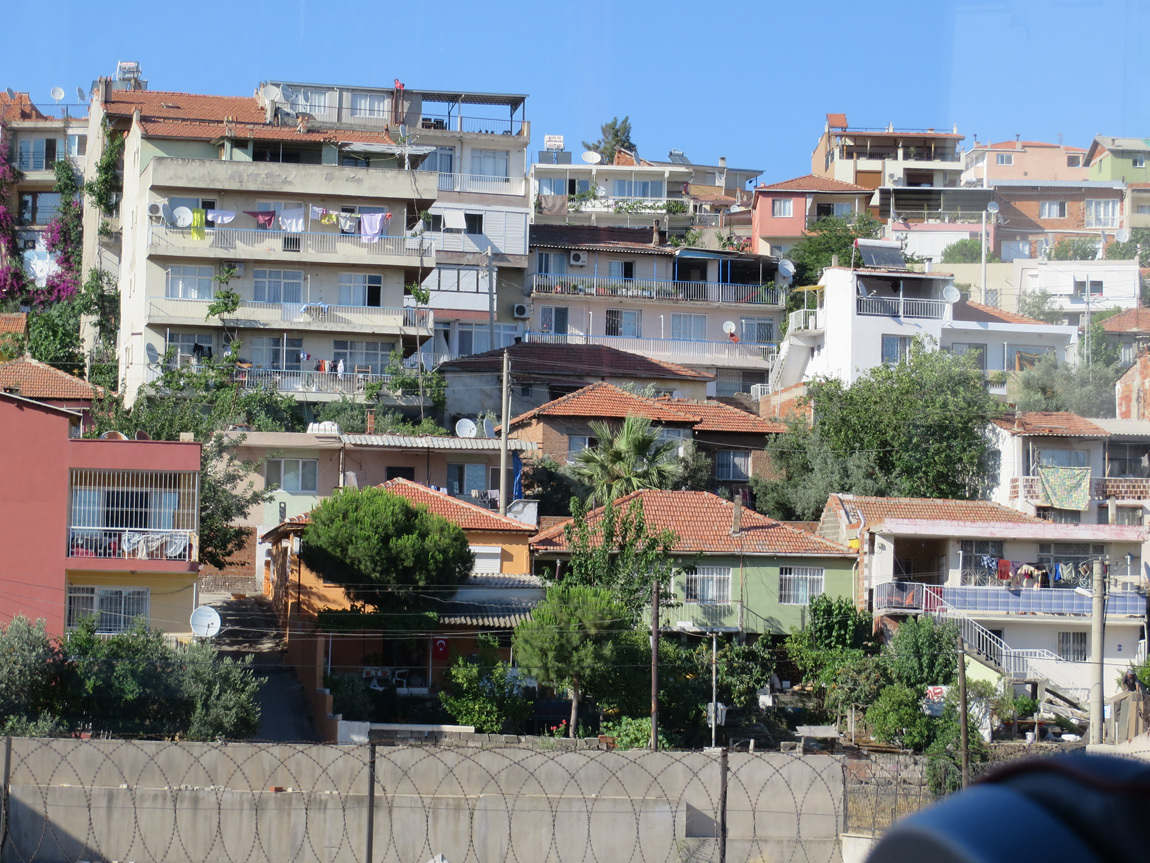
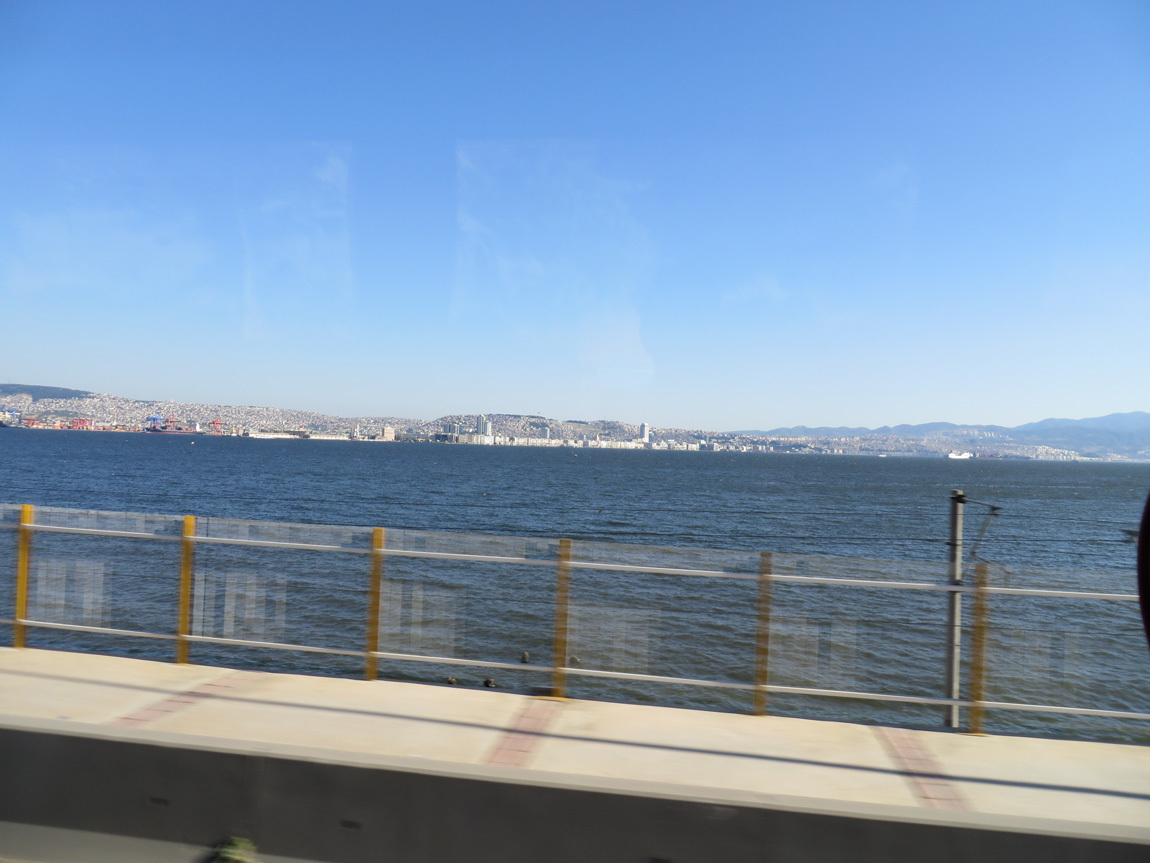
Our hotel, the Swissotel Grand Efes, is right on the Aegean Sea. It's an ultra modern, sleek hotel with a crazy lighting system in each room. It had both indoor and outdoor swimming pools, too.
I wrote in my journal: "Fantastic dinner. Salad with cheese and corn, a blended and gently spiced lentil soup, lamb stew over smashed eggplant, and a 3-layer chocolate dessert." This was a group dinner, courtesy of Odysseys Unlimited.
We slept well that night in our cool, quiet room with a big bed.
Navigation:
first Turkey post
next Turkey post
The Sanctuary of Asclepius (the Asclepieum) was a place of healing. Asclepius is the god of healing in ancient Greek religion. Good online discussions of the Asclepieum are on Wikipedia, Turkish Odyssey, and Turkey Travel Planner.
Signs at the site tell us the history as we walk along, and I am going to copy some of their content here. (I had to make a few corrections, though, the English versions on the signs were usually fraught with [sometimes funny] grammatical errors.)
From the signs:
"According to myth the sanctuary was founded by Arkhias. He had injured his food [sic] while hunting in Greece and was healed in Epidauros, the most famous Asclepieion in Greece. Out of gratitude to the god he established the cult of Asclepios in his hometown of Pergamum."
"Finds from the excavations date back to prehistoric times and the cult may predate the 4th century BC. The sanctuary that we see today was mainly built under the rule of the Roman emperor Hadrian (117-138 AD). During the Roman era Pergamum gained a high reputation due to the healing methods and famous doctors like Galen (131-210 AD) at the Asclepieium."
At one time, the Asclepieum was connected to the city by a 1 kilometer long, partly covered Holy Street (Via Tecta). The final part of the way was a columned road during the reign of Roman Emperor Hadrian. This is what remains today:

New patients were met by the priests at a gateway and an initial judgement of their medical condition made. Those who were obviously dying were not let in, nor were pregnant women. Accepted patients were led into the sacred area: a temple, fountains, pools of water, and sleeping rooms. The water came from a spring, and was believed to have sacred healing powers. The spring water still runs today:

The priests would ask patients about their dreams, as they believed that in the patients' dreams Asclepius would appear in a vision to tell them how to cure their illness.

Shops lined the columned road. These shops might have sold commodities that would help patients in their healing.

Ruins of a temple to Asclepius:

I was intrigued by the waterways that ran just underneath the ancient road. Stones were hollowed out to form a passageway for the water. Here is one of the old stones, set on its side:

Sections of columns were stacked and reinforced with lead poured through holes drilled in each section. The lead then served as a rod to keep the column sections stacked. Over the years the lead was robbed from the column sections, leaving empty holes in the stones.

This marble column fragment bears Asclepion's symbol: two snakes facing each other across a wheel. As snakes shed their skins they are "reborn," and likewise the patients at the Asclepion were to shed their illnesses and regain health.

You can barely see an old theater in the back in this photo. It sat 3500 people and had sacred pools in front.

I really liked this next part of the Asclepieum. We came up to a half-buried tunnel:

At one time this tunnel was completely buried, and that fact kept it intact. We walked through the arched, long room. This was the sleeping area of the old Asclepieum. It was cool and dim, such a nice change from the glaring sunlight outside. As we walked through it, we saw places where the sacred springs fed into it, and we saw remnants of marble that once lined the bottom. It was neat!

This view is taken from the other end:

We left the Asclepieum around 4 pm and drove south to Izmir, about a 2 hour drive away. Here are some photos as we neared our hotel.



Our hotel, the Swissotel Grand Efes, is right on the Aegean Sea. It's an ultra modern, sleek hotel with a crazy lighting system in each room. It had both indoor and outdoor swimming pools, too.
I wrote in my journal: "Fantastic dinner. Salad with cheese and corn, a blended and gently spiced lentil soup, lamb stew over smashed eggplant, and a 3-layer chocolate dessert." This was a group dinner, courtesy of Odysseys Unlimited.
We slept well that night in our cool, quiet room with a big bed.
Navigation:
first Turkey post
next Turkey post
Comments
No comments yet
Add Comment